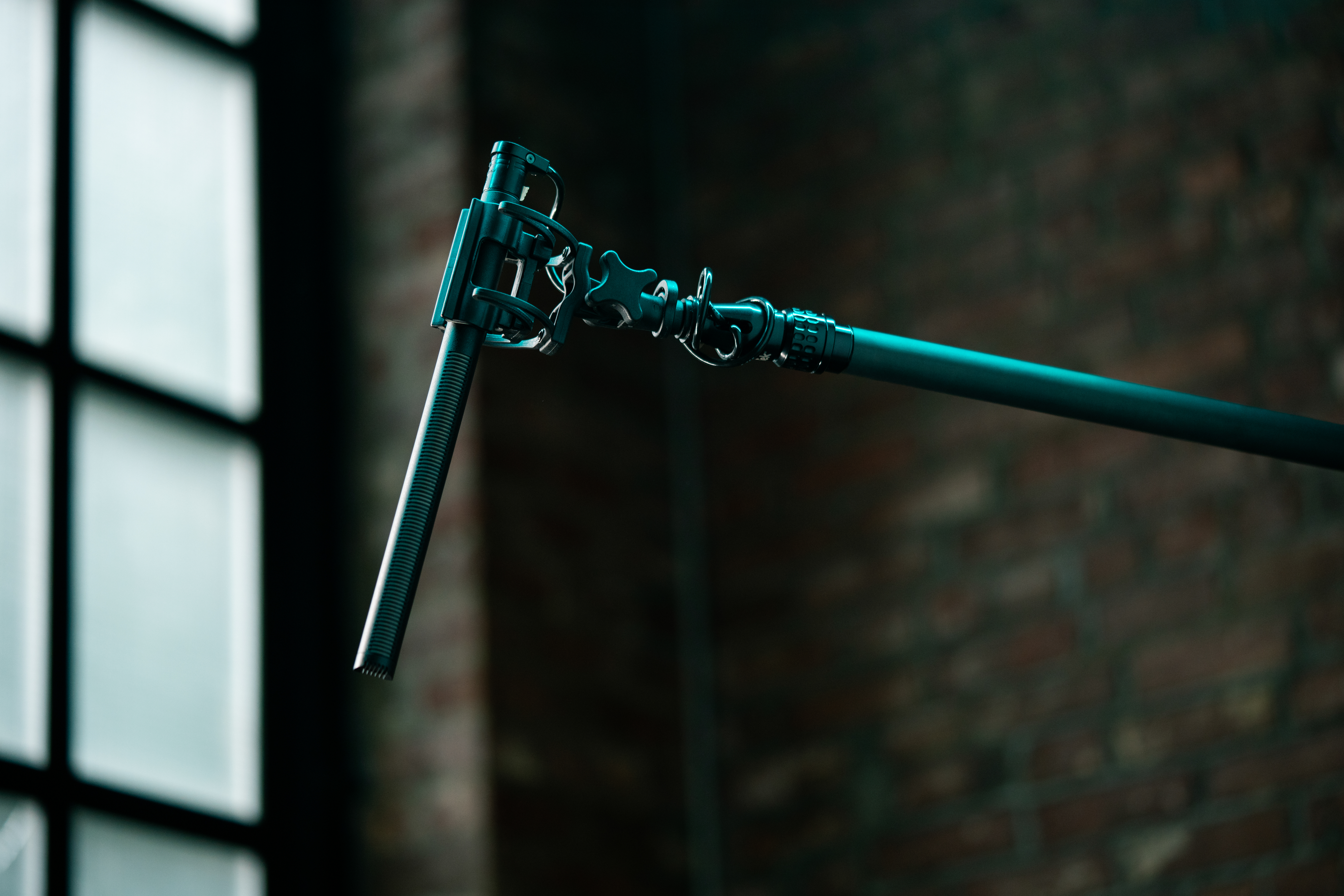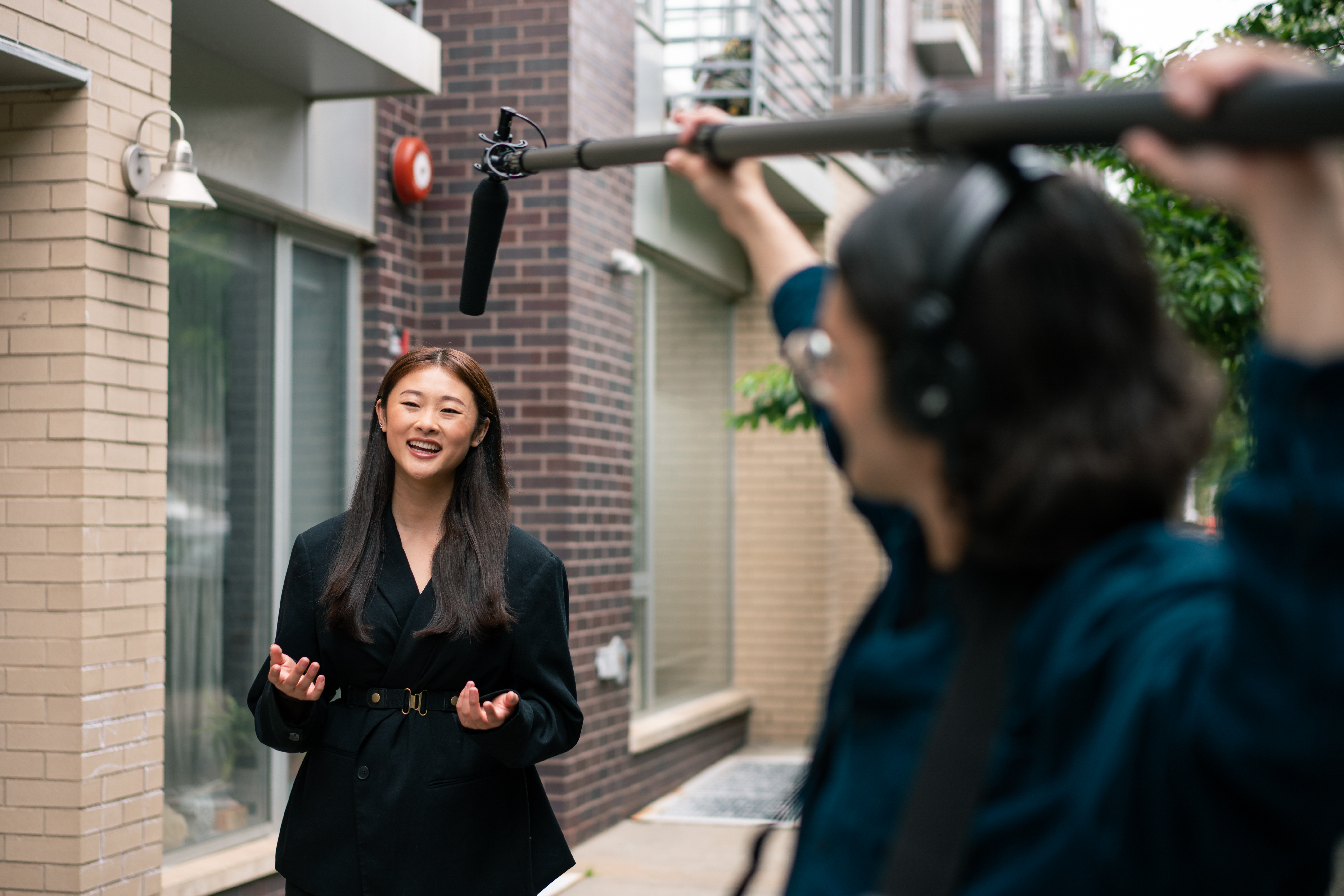50 Years of the Sennheiser MKH 416: The Legendary Mic Celebrates Its Golden Anniversary

Early Beginnings
The legend of the Sennheiser MKH 416 shotgun microphone begins strangely enough with a common working tool: the hacksaw. The iconic microphone, now well-known for its frequent use in major Hollywood motion pictures, television projects and voiceovers, received its origin in 1970 when Sennheiser technical manager, Dr. Hans-Joachim Griese, showcased the then newly designed MKH 415 shotgun mic to radio and television broadcasters. The 415 was the pride and joy of the Sennheiser development engineers, but upon reveal, it received its share of criticism.
Executives and customers in the crowd instantly displayed great interest for the MKH 415, but complained that the mic’s shotgun effect was so strong that it needed to be in constant motion to follow the speaker around, in order to capture the necessary audio.
Not batting an eye to the complaints, Dr. Greise asked for a hacksaw. The customers stood stunned as the Sennheiser technical manager proceeded to saw off an entire section of the 415’s microphone tube. Dr. Greise then tried out the now-shortened microphone to working perfection, much to the amazement of the astonished crowd. Thus, the legend of the MKH 416 was born.
Soon after Dr. Griese and the hacksaw made their impactful mark, a young Sennheiser engineer by name of Manfred Hibbing was tasked with designing the full-fledged MKH 416. While all previous shotgun models were AB-powered, a broadcasting preference at the time due to the resistance to voltage ripples, the 416 was designed to be Sennheiser’s first phantom powered (P48) shotgun mic. Hibbing possessed ample expertise in both electroacoustics and RF technology. Hibbing’s involvement in the project was a crucial final piece in the MKH 416 design puzzle, before releasing in 1975.

The Industry Standard
The MKH 416 is now well-known as the “industry standard” when it comes to shotgun microphones, but why exactly?
One of the main reasons has to do with how the 416 operates on the RF (Radio Frequency) condenser principle. While “radio frequency” may give the illusion of a wireless technology, it instead refers to the high-frequency voltage within the capsule, along with the associated electronic components within the microphone.
Unlike “standard” condenser mics, an RF condenser model is built to be used outdoors, no matter the weather condition. Hot or cold, rain or snow, humid or freezing, MKH microphones can withstand the toughest of elements. This makes the 416 the ideal microphone for sports, outdoor broadcasting and movie filming at the most challenging of locations. While weather durability is a main point of reference for the 416, the excellent directivity and shorter length are others.
The acoustic interference principle, of which the 416 operates on, features a capsule with a so-called interference tube built in front of it. This tube includes regularly arranged slots that are covered with acoustic impeding fabric, which prevents reflections and standing waves from forming inside the tube.
When sound arrives directly in front, the tube has no effect, yet when sound enters the tube from the sides, it passes through different holes, resulting in different paths to the transducer, thus delaying and effectively canceling out the reflections. This effect increases at higher frequencies, essentially picking up sound coming directly in front, which makes the 416 a standout for speech intelligibility, leading to its prominence within the voiceover industry.

Sound of Cinema
The MKH 416 has seen decades of use within the filmmaking world, from its early days in now classic films, to its continued presence in contemporary cinema. The first notable success came in the 1980s, when it became a primary tool for location sound recording. Film productions, particularly those with intricate sound design or difficult recording environments, began turning to the MKH 416 for its unmatched clarity and precision.
Perhaps most famously, the 416 is frequently associated with the illustrious voice work of characters in major Hollywood films. It is used extensively in the recording of ADR (Automated Dialogue Replacement) in post-production, where its focused pick-up pattern allows for dialogue to be captured cleanly, even in flawed acoustic conditions.
Not only is the MKH 416 a favorite among sound mixers, but it has also been used by some of the most legendary filmmakers in history. The 416’s distinctive sonic characteristics have made it the microphone of choice for high-profile directors.
Whether it was capturing key dialogue on busy city streets, during dynamic action chase scenes, or in the controlled chaos of a soundstage, the 416 excelled, leading to a secure trust by industry professionals to consistently deliver flawless audio.
As up-and-coming filmmakers continue to push the boundaries of modern storytelling, the MKH 416 remains a trusted companion in capturing the sounds that bring their unique stories to life. With its distinctive ability to isolate sound, capture precise dialogue and reject environmental noise, the 416 continues to be the go-to microphone for all types of productions.
Musical Waves
While the MKH 416 is notable for its use in cinema and television, the music industry also has a fond appreciation for the shotgun mic. The MKH 416 made a featured cameo in the music video for the 1996 hit single “In the Meantime” by UK alternative rock band Spacehog, off their 1995 album “Resident Alien”.
The song, which reached #1 on both the US and UK rock charts, and ultimately reaching #32 on the Billboard Hot 100, was accompanied alongside a notable music video which was directed by Jake Scott, son of acclaimed film director Ridley Scott.
The band knew they wanted a cool “70’s TV style microphone” for the video, and in came Jake with the idea to feature the MKH 416. Inspired by the works of filmmakers Stanley Kubrick and Michelangelo Antonioni, the “In the Meantime” music video still looks as fresh today as it did when it premiered nearly thirty years ago.
When reflecting on the 416 on its 50th birthday, Spacehog frontman Royston Langdon relayed that the mic itself represents the band well: “nostalgic but new, and ultimately timeless.” Well said Royston, we tend to agree!
You can catch Spacehog on tour this summer, throughout the West Coast of the United States, co-headlining alongside fellow UK alt-rock band EMF.
A Legacy Continues
From its humble “cutting edge” beginnings, to its current place as a cinematic staple, the MKH 416 has become synonymous with reliability and impeccable sound quality. The legendary shotgun microphone remains a tool that constantly rises to meet the demands of the craft, especially within the most challenging sound environments.
As the years march on and our technology continues to evolve, the MKH 416 maintains its relevance, consistently adapting to the modern needs of filmmakers, sound designers and voice actors alike. Sennheiser’s continuous commitment to the highest quality standards ensures that the 416 will remain a top-tier tool for years to come.
With its golden anniversary marking fifty years of groundbreaking work and achievement, it’s clear that the enduring legacy of the MKH 416 is far from over.

